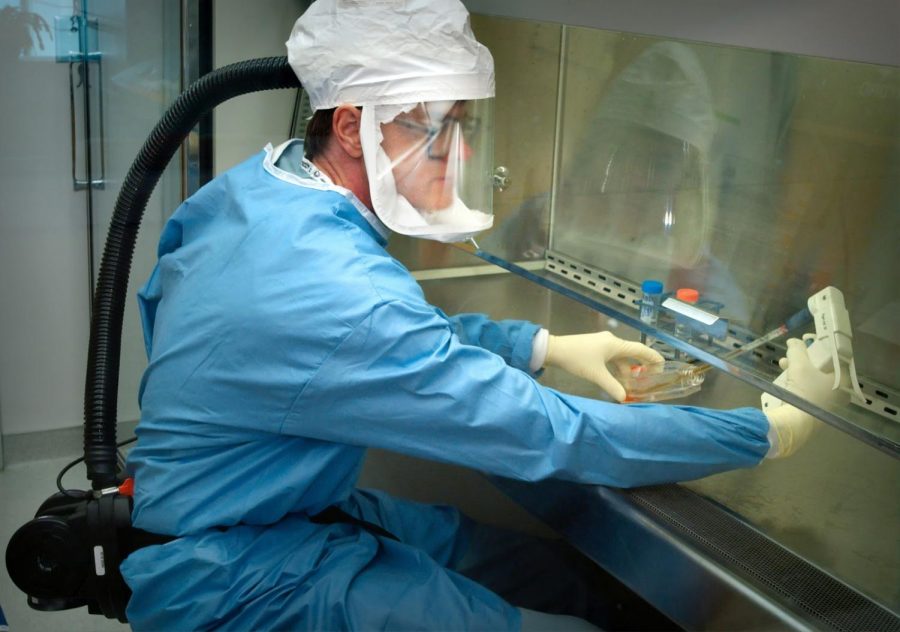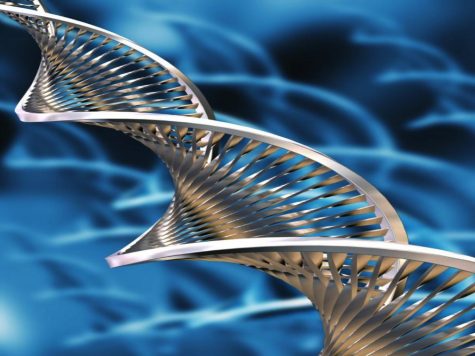Genetic Engineering: The Good, The Bad, and The Ugly
“This photograph depicts one of the Centers for Disease Control’s (CDC) staff microbiologists using an electronic pipette to extract reconstructed 1918 Pandemic Influenza virus from a vial containing a supernatant culture medium.”
Isaac Asimov once said, “The advance of genetic engineering makes it quite conceivable that we will begin to design our own evolutionary progress.” For the first time in history, humans are at a point where one can choose to change their environment, rather than follow a form-to-fit mindset. This pushes the boundaries of what it means for one’s actions to be humane, whether they impact the human race for the better or worse. As humans still try to understand what our standard ethics are in this topic, it is important to understand that one’s original principles will need to be rewritten, regardless of the outcome.
Some scientists applaud recent advances in bioengineering, which have aided in making medical cures and preventions easier to achieve. CRISPR, or Clustered Regularly Interspaced Short Palindromic Repeat, is relatively new to the biomedical field, but is already challenging what is possible in terms of gene editing. At its simplest, CRISPR is a group of DNA that can be programmed to detect and target strands of other DNA in an organism. Once the strand is found, CRISPR can either be used to eliminate or replace it. Because CRISPR can be used to manipulate DNA so accurately, biologists have found it useful for a wide array of studies. Biologists are able to “produce RNA segments from the CRISPR arrays to target the viruses’ DNA”, according to the US National Library of Medicine. Through modifying DNA, CRISPR can effectively render invaders of one’s body ineffective. CRISPR can be further used in treating underlying diseases such as blood disorders. According to Fernanda Rodriguez from LabioTech, “The blood disorders beta-thalassemia and sickle disease, which affect oxygen transport in the blood, are the target of a CRISPR treatment.” Researchers are able to target specific genomes in blood cells through CRISPR and replicate new, normal blood cells. Rodriguez wants the readers to understand that CRISPR can be used for a wide array of diseases, and later explains how it is being used to treat a handful of other diseases and disorders. Because CRISPR is cheaper than original forms of gene editing, it can be studied by a wider range of scientists, spurring the development of new cures and discoveries.
Being relatively easy to access among the population for research and use, CRISPR’s availability proves to be a double edged sword. While CRISPR has been seen as innovative to those pioneering the field of Gene Editing, many see it as a step in the wrong direction of equality among the human race. This clashes with ethics in society, both on a global scale and in bioethics. According to the Code of Medical Ethics by AMA regarding gene editing, “Patients who undergo genetic testing have a right to have their information kept in confidence…”, which AMA wants to explain how patients have specific rights that cannot be exploited. Some scientists have not adhered to standards similar to those provided by the AMA, resulting in backlash around the world. Chinese researcher He Jiankui reportedly, “…helped produce genetically edited babies…” according to Science Magazine. The embryos that Jiankui modified were unaware of their information being shared, and the parents of the embryos had no notification that their children were modified. This infringes on the rights of the embryo and parents, which ultimately lead to a general understanding among bioengineers that a new code of ethics would have to be created. This proves to be a dangerous step in differences found among humans, who already genetically vary through natural selection. If embryos are edited with programs like CRISPR to become more enhanced, changes would escalate quickly, which ultimately calls for a reform in bioethics. Furthermore, ongoing research should be testified under the current code, so that scientists can get a general understanding of what needs to be changed.
In light of these events, there will be the, “…first Annual Biomedical Engineering Society’s Medical Device Forum series”, which according to Northern Illinois university will cover, “…authorization and advanced manufacturing and simulation in light of the global pandemic.” While these conferences among scientists and engineers of all kinds will cover global response to Covid-19 research, topics regarding moral ethics will need to be visited as new forms of manufacturing are discussed. Among these will be an address to those attending the conference on June 2nd about what changes in moral ethics should be made, so that future research can be conducted safely.
As humans create change in themselves, scientists and engineers worldwide come together to form a common understanding of what ethics should be followed, as they question the original boundaries of science. If there were hypothetically no limits on gene editing, it is inevitable that cures for major illnesses and cancers would be found, but it seems these benefits are outweighed by inhumane experimenting on organisms and embryos, ultimately leading to the Code of Medical Ethics becoming irrelevant. If this were to happen the very basis of human relations would fall, as medical practices could no longer be held to a standard. So long as advances in gene editing are taken at a pace, humanity will be safe.
Work Cited:
Nerem, Robert. The Emergence of Bioengineering, National Academy of Engineering, 1 Dec. 1997, www.nae.edu/7543/TheEmergenceofBioengineering.
Valles, Sean A. “Center for Bioethics and Social Justice.” Home | Center for Bioethics and Social Justice, Michigan State University, 2010, bioethics.msu.edu/.
Reference, Genetics Home. “What Are Genome Editing and CRISPR-Cas9?: MedlinePlus Genetics.” MedlinePlus, U.S. National Library of Medicine, 18 Sept. 2020, medlineplus.gov/genetics/understanding/genomicresearch/genomeediting/.
Maron, Dina Fine. “Embryo Gene-Editing Experiment Reignites Ethical Debate.” Scientific American, Scientific American, 2 Aug. 2017, www.scientificamerican.com/article/embryo-gene-editing-experiment-reignites-ethical-debate/.
says:, Paul Harvey, et al. “CRISPR: A Game-Changing Genetic Engineering Technique.” Science in the News, 31 July 2014, sitn.hms.harvard.edu/flash/2014/crispr-a-game-changing-genetic-engineering-technique/.
AMA. “Code of Medical Ethics Overview.” American Medical Association, 2001, www.ama-assn.org/delivering-care/ethics/code-medical-ethics-overview.
Maron, Dina Fine. “Embryo Gene-Editing Experiment Reignites Ethical Debate.” Scientific American, Scientific American, 2 Aug. 2017, www.scientificamerican.com/article/embryo-gene-editing-experiment-reignites-ethical-debate/.
Dennis NormileDec. 30, 2019, et al. “Chinese Scientist Who Produced Genetically Altered Babies Sentenced to 3 Years in Jail.” Science, 30 Dec. 2019, www.sciencemag.org/news/2019/12/chinese-scientist-who-produced-genetically-altered-babies-sentenced-3-years-jail.
Smanisco, Ken. “NSF, AMA Reps to Speak at Forum on Biomedical Engineering.” College of Engineering and Engineering Technology, 18 Mar. 2021, ceet.news.niu.edu/2021/03/18/nsf-ama-reps-to-speak-at-forum-on-biomedical-engineering/.
Edited by Aldo Campana, Biology and Ethics: the Paradoxes of the Natural, 27 Sept. 2017, www.gfmer.ch/Endo/Lectures_09/biology_and_ethics.htm.







